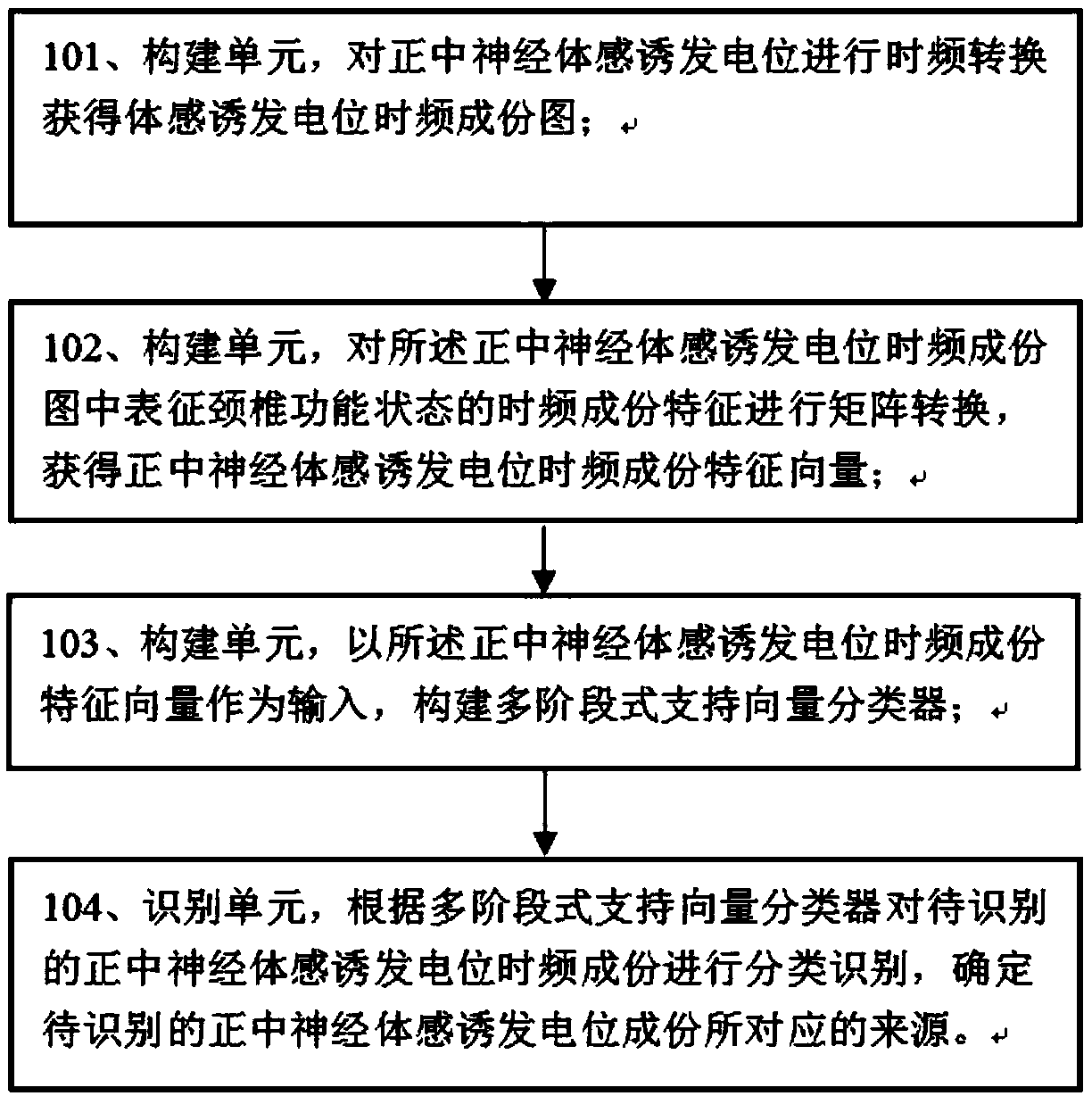Method and device for identifying somatosensory evoked potential components based on support vector machine
A support vector machine and evoked potential technology, applied in the field of biomedical signal processing, can solve the problems of easy misjudgment and long time consumption, and achieve the effects of improving sensitivity and specificity, expanding application fields, and overcoming small sample size
- Summary
- Abstract
- Description
- Claims
- Application Information
AI Technical Summary
Problems solved by technology
Method used
Image
Examples
Embodiment 1
[0042] 101. Stimulate the median nerve, and collect the somatosensory evoked potential of the median nerve. The somatosensory evoked potentials of the median nerve were collected from four groups of people, including normal subjects, patients with single-segment compression of cervical C4, patients with single-segment compression of cervical C5, and patients with single-segment compression of cervical C6. According to the matching pursuit algorithm (matchingpursuit), the time-frequency analysis was performed on all the collected somatosensory evoked potentials of the median nerve, and the time-frequency mapping of the somatosensory evoked potentials of the median nerve was obtained.
[0043] 102. Perform matrix transformation on the time-frequency component characteristics of the time-frequency component diagram of the median nerve somatosensory evoked potential representing the functional state of the C4-C6 single segment of the cervical spine, and obtain the time-frequency co...
PUM
 Login to View More
Login to View More Abstract
Description
Claims
Application Information
 Login to View More
Login to View More - R&D
- Intellectual Property
- Life Sciences
- Materials
- Tech Scout
- Unparalleled Data Quality
- Higher Quality Content
- 60% Fewer Hallucinations
Browse by: Latest US Patents, China's latest patents, Technical Efficacy Thesaurus, Application Domain, Technology Topic, Popular Technical Reports.
© 2025 PatSnap. All rights reserved.Legal|Privacy policy|Modern Slavery Act Transparency Statement|Sitemap|About US| Contact US: help@patsnap.com



